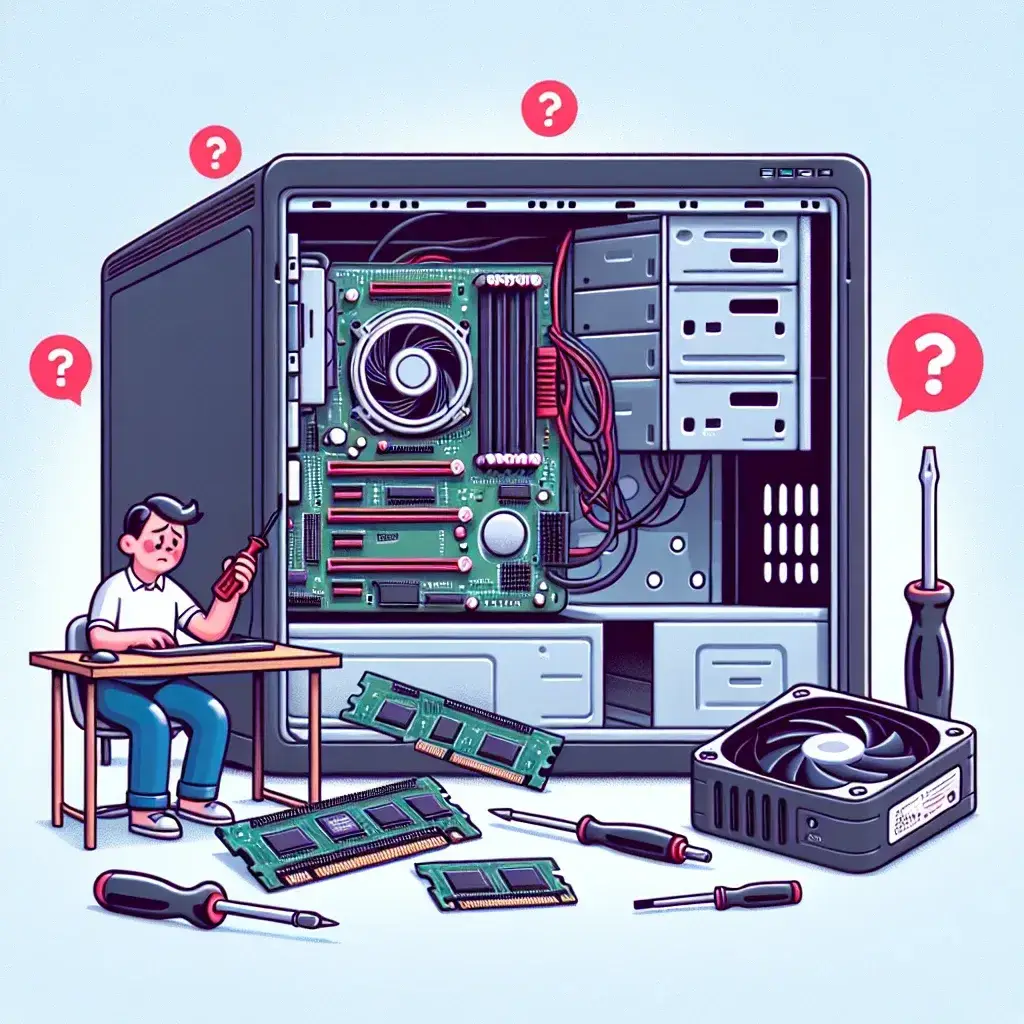Building your own computer can be a rewarding and cost-effective experience, but it comes with its own set of challenges. Avoiding common mistakes can save you time, money, and frustration, ultimately providing you with a smooth assembly process and a powerful, efficient machine. In this comprehensive guide, we’ll take a look at some of the most frequent errors encountered and provide tips on how to avoid them.
1. Not Planning Ahead
Before you begin gathering parts and tools for your build, it’s crucial to plan every aspect of your computer. Right from selecting compatible components to ensuring that your build stays within budget, poor planning can lead to significant complications.
| Mistake | Consequence | Solution |
|---|---|---|
| Not setting a budget | Overspending or under spec’d parts | Determine budget in advance |
| Ignoring component compatibility | Parts not fitting or working together | Use online compatibility checkers |
2. Choosing Incompatible Parts
Selecting components that don’t work together is one of the most common mistakes in DIY builds. This includes the CPU and motherboard, RAM, and even the power supply unit (PSU). Incompatibility can cause your computer to malfunction or not work at all.
How to Avoid This Mistake:
- Check motherboard CPU socket compatibility.
- Ensure RAM is compatible with the motherboard.
- Verify PSU wattage and connections align with your components.
3. Skimping on the Power Supply
Your PSU is one of the most critical components of your system. A low-quality or underpowered PSU can cause system instability, random shutdowns, and in worst-case scenarios, damaging your components.
How to Avoid This Mistake:
- Buy from reputable brands.
- Calculate power requirements using online tools.
- Consider future upgrades when deciding on wattage.
4. Incorrect Installation of Components
Improperly installing components can lead to a myriad of issues ranging from non-functionality of the part to physical damage. It’s critical to handle each part with care and follow the manufacturer’s instructions.
How to Avoid These Mistakes:
- Install CPU and cooler carefully and use the thermal paste properly.
- Ensure RAM clicks securely into place.
- Mount GPU and other expansion cards correctly.
5. Neglecting Cable Management
Messy cables can restrict airflow and make future upgrades difficult. Good cable management not only looks neat but also helps to maintain optimal airflow, keeping your system cool.
How to Avoid This Mistake:
- Use zip ties and Velcro straps.
- Route cables behind the motherboard tray.
- Avoid covering air vents with cables.
6. Forgetting to Apply Thermal Paste
The thermal paste serves as a medium for heat conduction between the CPU and the cooler. Forgetting to apply it or applying too much/too little can lead to overheating issues.
How to Avoid This Mistake:
- Apply a pea-sized amount of thermal paste.
- Spread evenly if needed, depending on the cooler type.
- Don’t reuse old thermal paste.
7. Ignoring BIOS or Driver Updates
Once your computer is assembled, it’s important to update the BIOS and install the latest drivers for all your hardware components. Outdated firmware or drivers can cause hardware not to work correctly or take full advantage of the latest features and performance improvements.
How to Avoid This Mistake:
- Check the motherboard’s website for the latest BIOS updates.
- Regularly update GPU drivers from the manufacturer’s site.
- Update firmware for SSDs and other peripherals as well.
8. Overlooking Cooling Solutions
Proper cooling is essential in ensuring your components run efficiently and last longer. Neglecting to install adequate cooling solutions can lead to overheating and thermal throttling, reducing performance.
How to Avoid This Mistake:
- Ensure your case has good airflow.
- Consider aftermarket CPU coolers for better performance.
- Install additional case fans if necessary.
9. Skipping the Post-Build Checklist
A post-build checklist can help you catch any errors before they become serious problems. This includes checking all connections, running initial boot tests, and ensuring the system runs stably under stress.
How to Avoid This Mistake:
- Verify all cable connections.
- Test each pair of RAM sticks individually.
- Run stress tests to check system stability.
10. Not Testing Before Final Assembly
Before neatly arranging all components in the case, it’s wise to test the system on an open bench setup. This makes it easier to identify any faulty parts without having to disassemble everything again.
How to Avoid This Mistake:
- Set up your system on a non-conductive surface first.
- Test all major components like CPU, GPU, and RAM before final assembly.
- Ensure the POST process passes before mounting everything in the case.
By understanding and avoiding these common mistakes, you can ensure a smoother and more efficient PC building experience. Proper planning, attention to detail, and a little patience go a long way in helping you build a reliable and powerful custom computer.

